Winterizing lavender: expert ways to protect your plants from cold weather
Find out about winterizing lavender to get your plants in the best possible shape to cope with colder temperatures, frost and snow
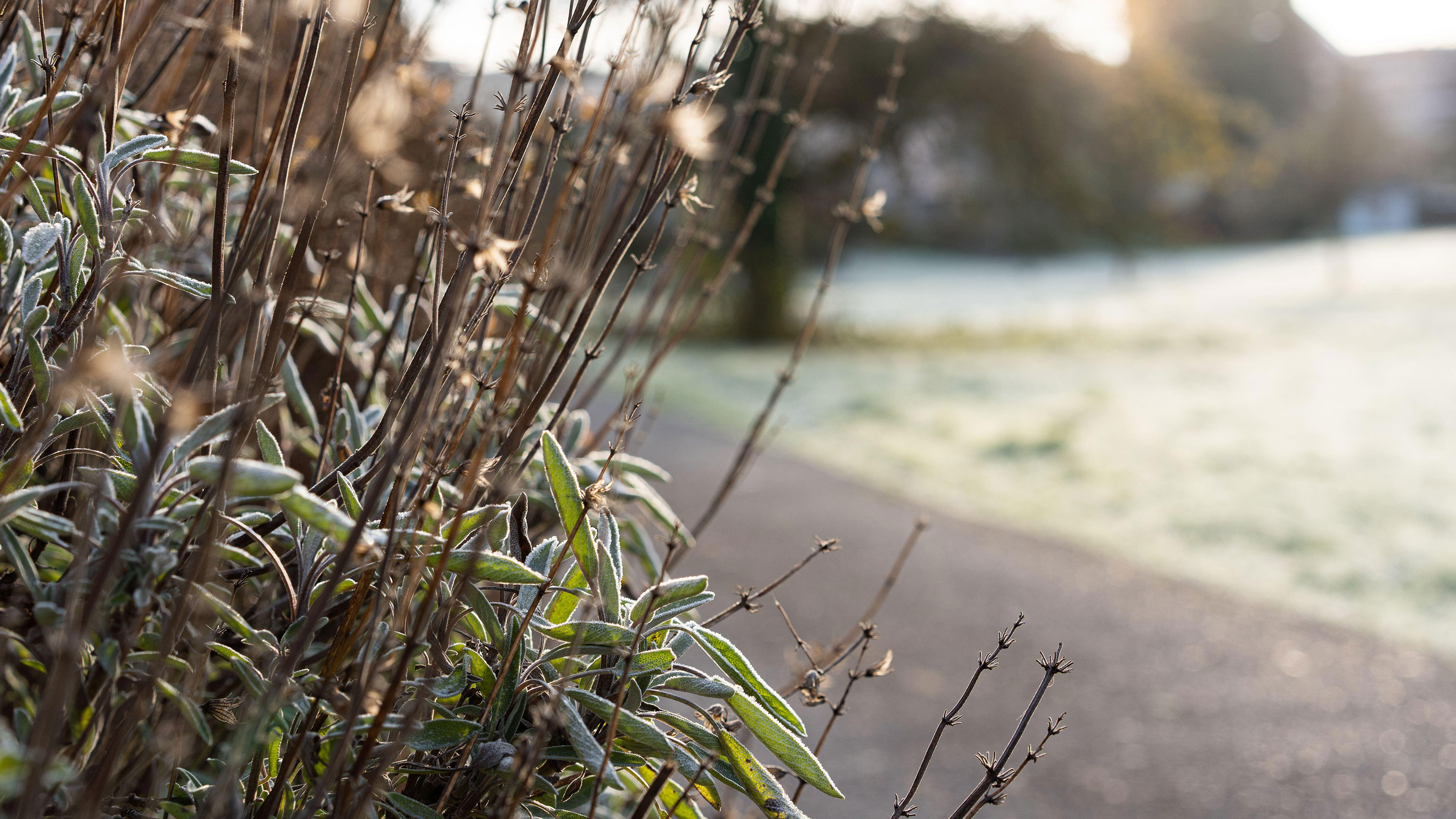

The job of winterizing lavender is pretty straightforward once you've established what variety of plant you have and how hardy it is. One of the main things to check is that your plants are not sitting in waterlogged soil during the cooler months.
If you have tender young lavender plants you need to take extra special care to protect them from frost and snow. It’s a good idea to pot them up in a well-drained soil that’s a mix of compost and coarse sand then transfer to a sheltered spot. You can wrap them up with some fleece or bubble wrap if things get really chilly.
With the right lavender care and winterizing routine, your plants will perform much better in the next flowering season.
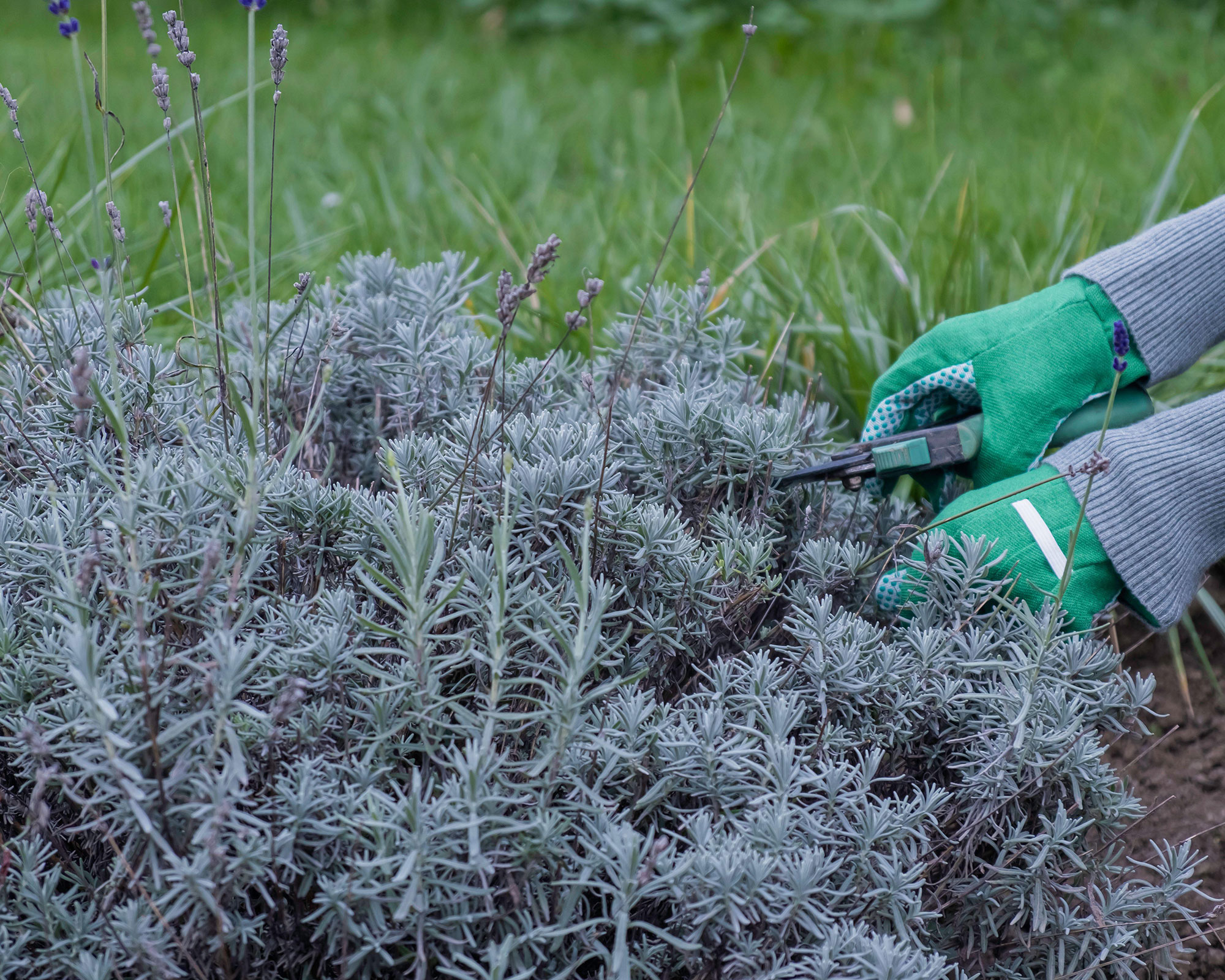
Winterizing lavender plants in 4 easy steps
As soon as the weather gets very cold don’t do anything major to your lavender plants like pruning or moving them as it's too late and you may end up damaging them. Knowing how to protect plants from winter is key to giving your lavender plants the best chance of survival.
It's also a good idea to find out about the different types of lavender to see if yours is hardy or not. English and intermedia lavenders are very cold hardy, while French lavender is more tender and can be easily damaged by frost.
Once you've established this there are just a few simple rules to follow when it comes to winterizing lavender plants successfully.
1. Ensure the soil isn't waterlogged during winter
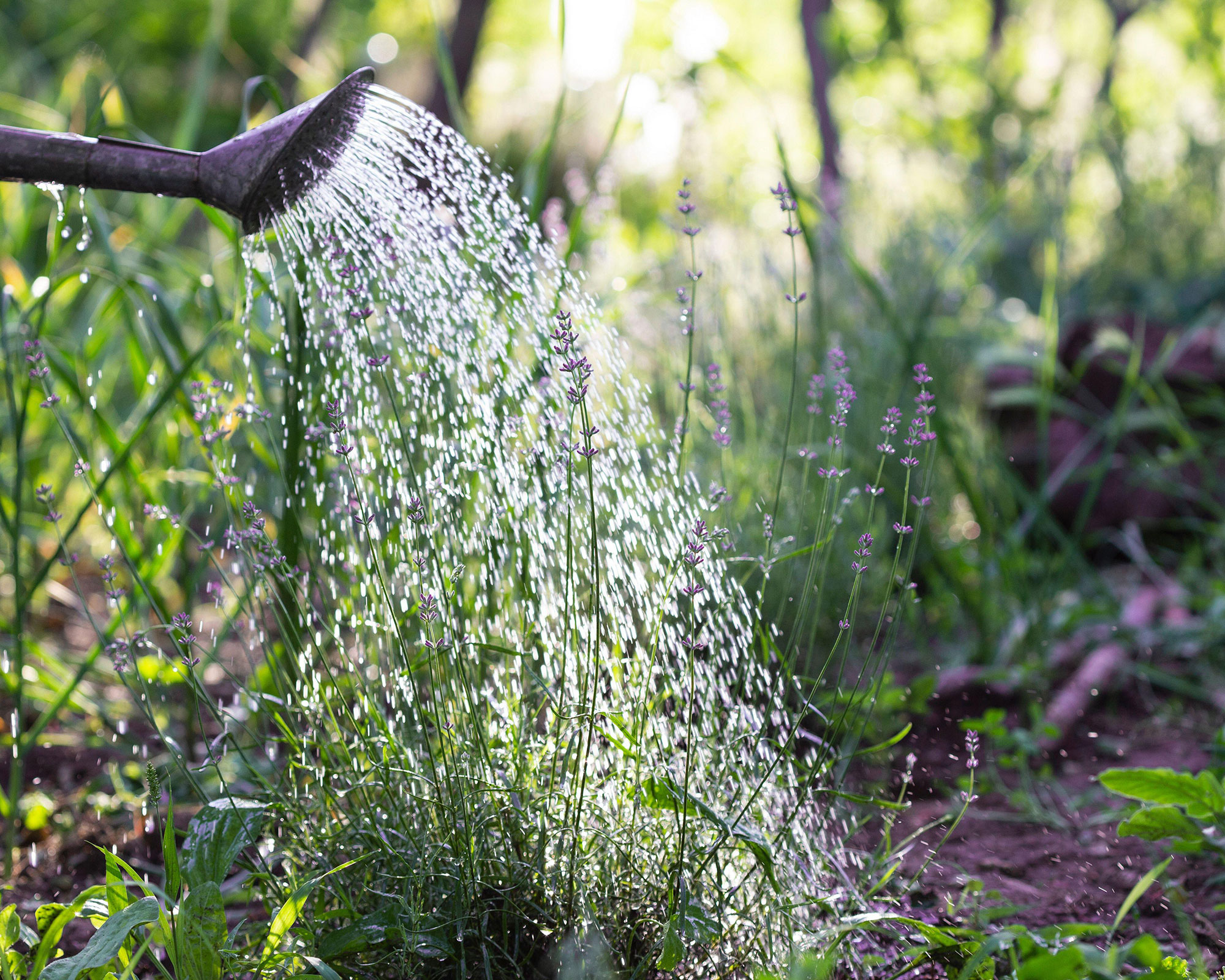
Lavender plants prefer dry, well-drained soil, so bear this in mind if you are planning on landscaping with lavender in your backyard. If you plant them in heavy soil and the ground starts to freeze, ice could form and could damage them.
'Lavenders always need good garden drainage,' says Morris Hankinson, MD at Hopes Grove Nurseries. 'They are one of the best Mediterranean plants so dislike being wet and waterlogged. If the soil is heavy when you're planting them try adding some horticultural sharp sand or grit, or even plant them on little raised cushions of soil so water can run off from the center of the plants.'
No matter how warm or cold your climate is, lavender plants will rot if their roots are waterlogged. So ease off on watering them at the end of summer, and make sure the soil around your lavender plant remains well drained throughout winter. If this doesn't work it's a good idea to reposition them in a spot where they will be happier, but only if the weather is still relatively mild when you do it.
2. Tidy up your lavender before winter
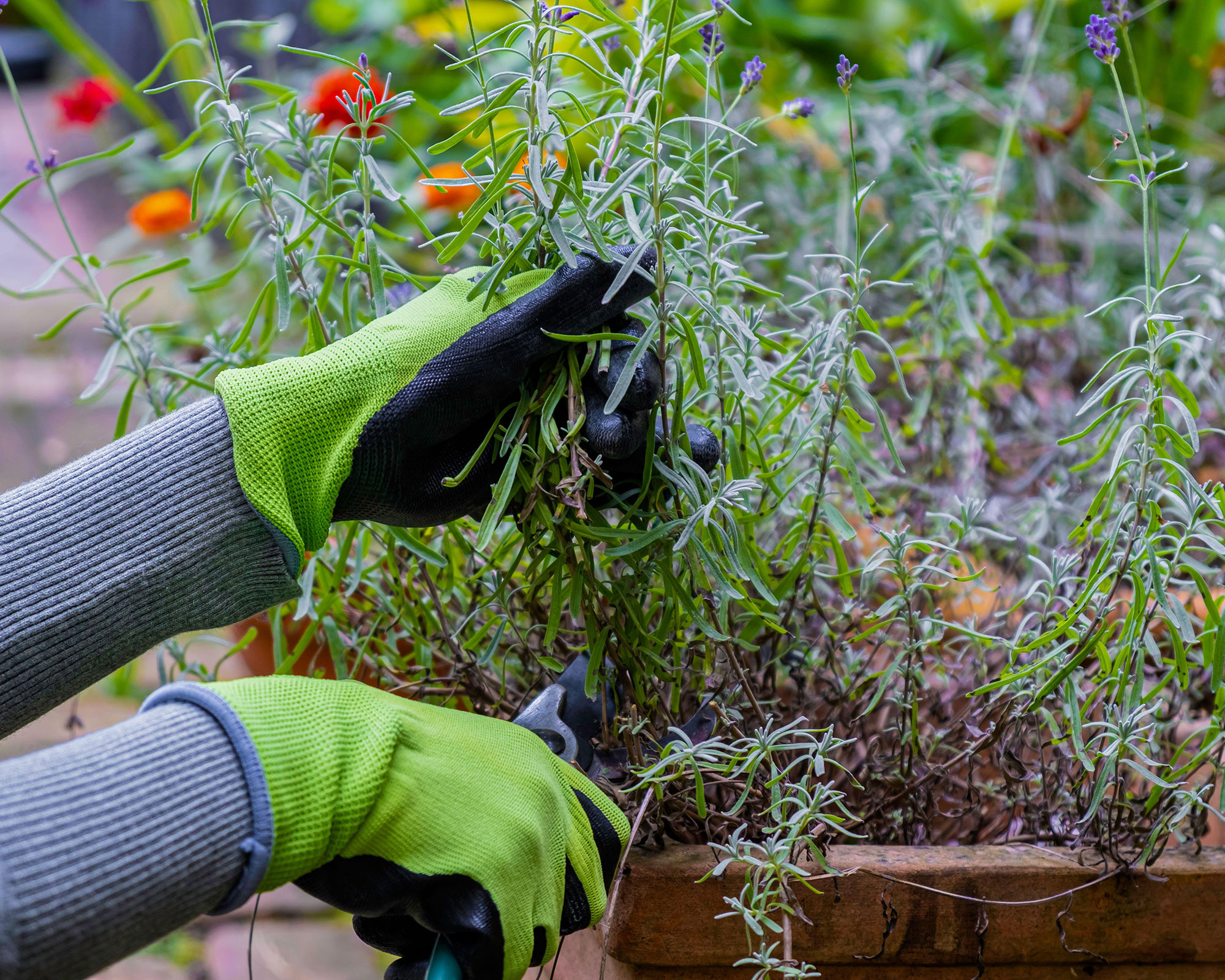
In fall, lavender bushes tend to look unkempt, featuring lots of dead heads, dry foliage and straggly growth. Your plant will need much more than simply snipping these off if it's going to thrive.
'First it helps to do a rough cut all over on the first lot of growth to get rid of the long straggly stems and deadheads,' says Rosy Hardy of Hardy's Plants. 'This means you will then be able to see what you need to do to finish off.'
Once you've completed this initial stage of pruning lavender, part the remaining stems and look down into the plant where you see new growth emerging. If you cut back much harder it will encourage the new growth. On this second lots of cuts you can go in with your pruning shears or secateurs and make things much shorter and tidier.
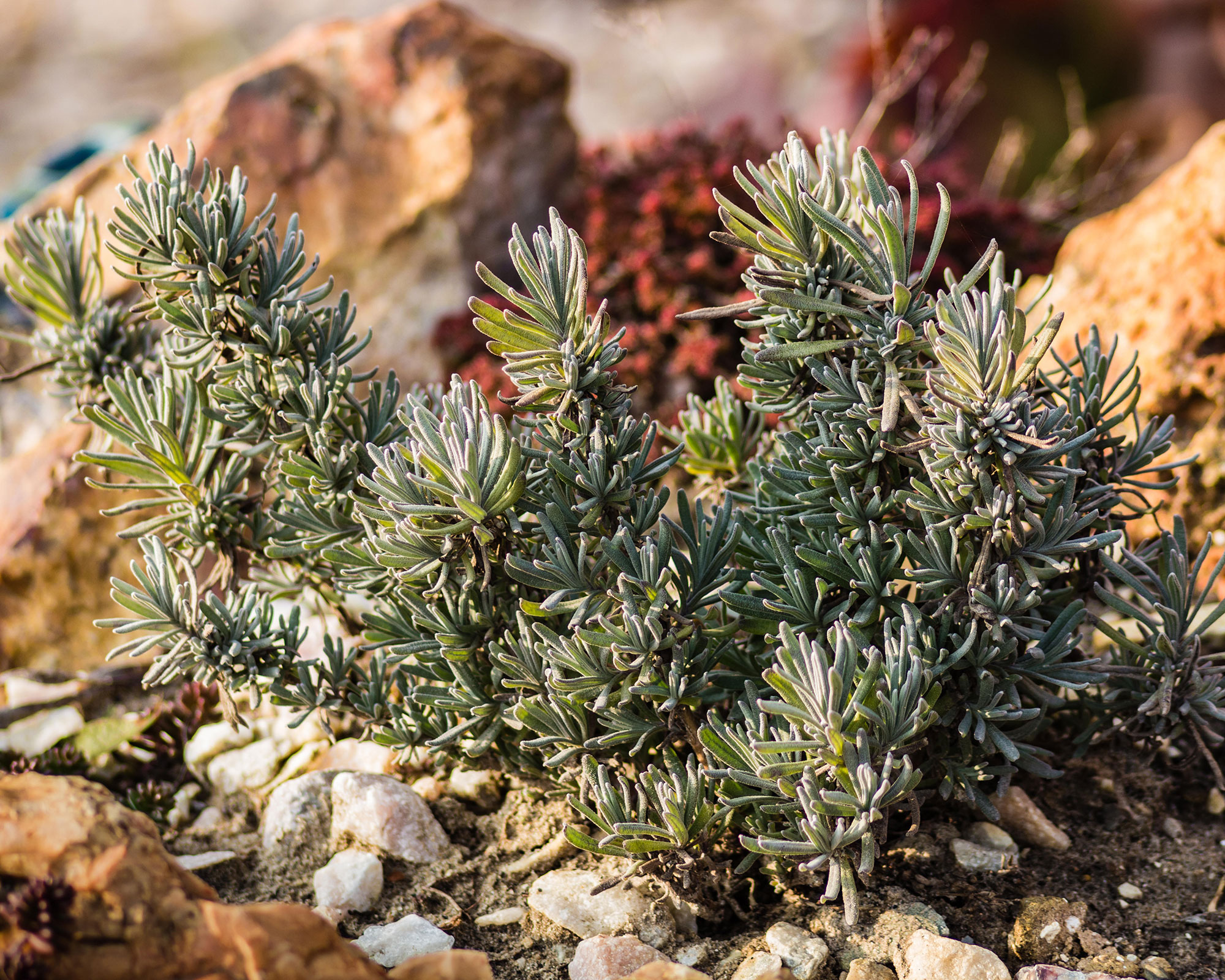
When winterizing lavender in this way, aim for a nice low mound. This will help your plant to withstand snowfall and other inclement weather. If your plant is shaped into a mound any snow will create a cosy blanket over it and help to insulate it against the cold.
'This will also keep your lavender shrubs compact and bushy,' says Morris, 'and they will live for longer. The alternative to not trimming can quickly lead to tall and ungainly lavenders within a couple of seasons with bare stems, just a few leaves and flowers at the top. These plants will run out of steam and die back after a few years. That's if strong winds or the weight of winter snow don’t see them off sooner!'
3. Clear away any surrounding leaves
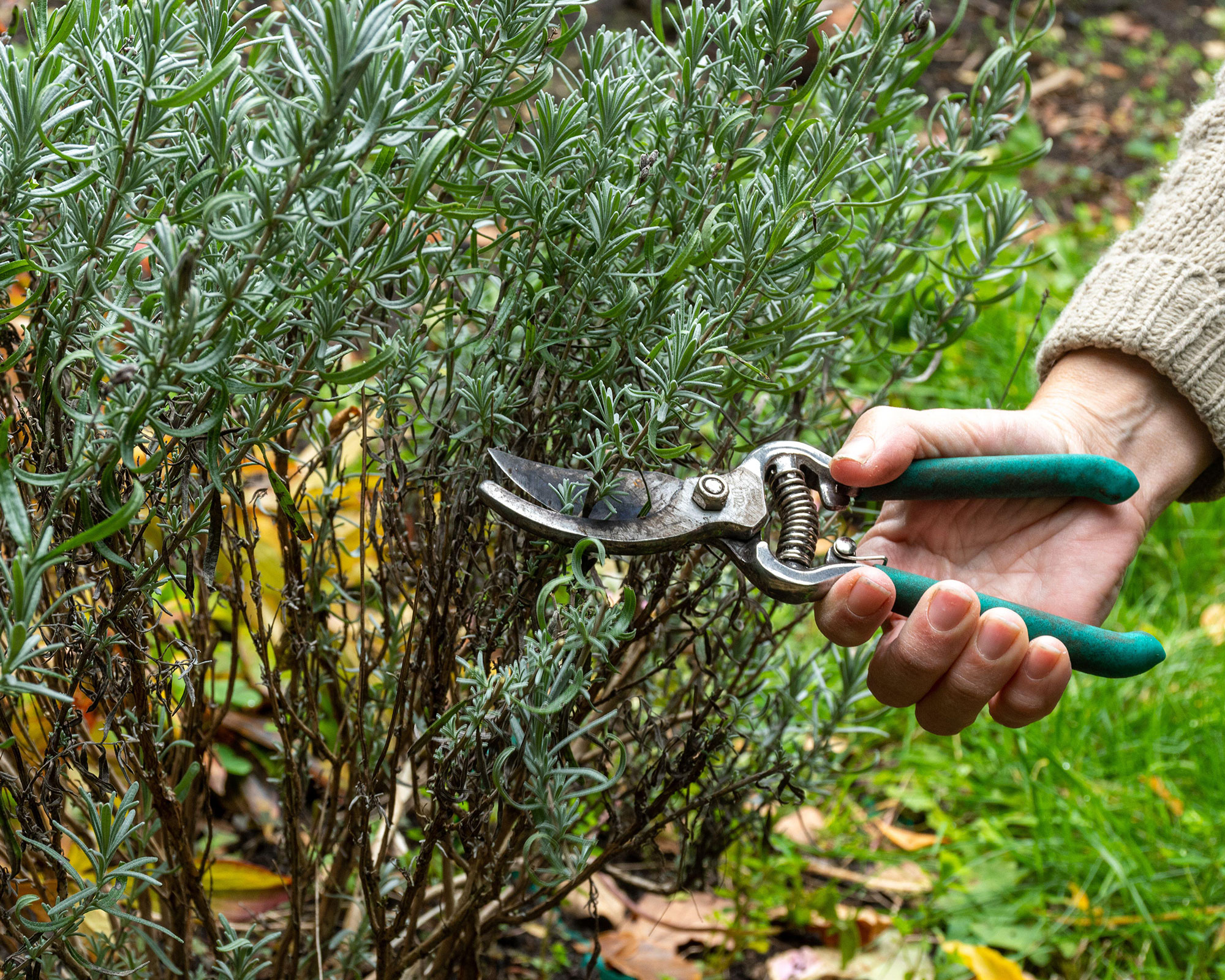
As a native Mediterranean plant, lavender prefers sandy soil that is well drained and does not hold onto excess moisture. A build-up of wet leaves around it will create damp and decaying conditions that lavender plants will not like.
So it's important to clear away leaves and either add them to your compost heap or use them for making leaf mold.
You can also try laying down some sand, which will wash into the soil over time and improve the drainage by creating a more porous structure.
4. Provide added protection for your lavender in colder areas
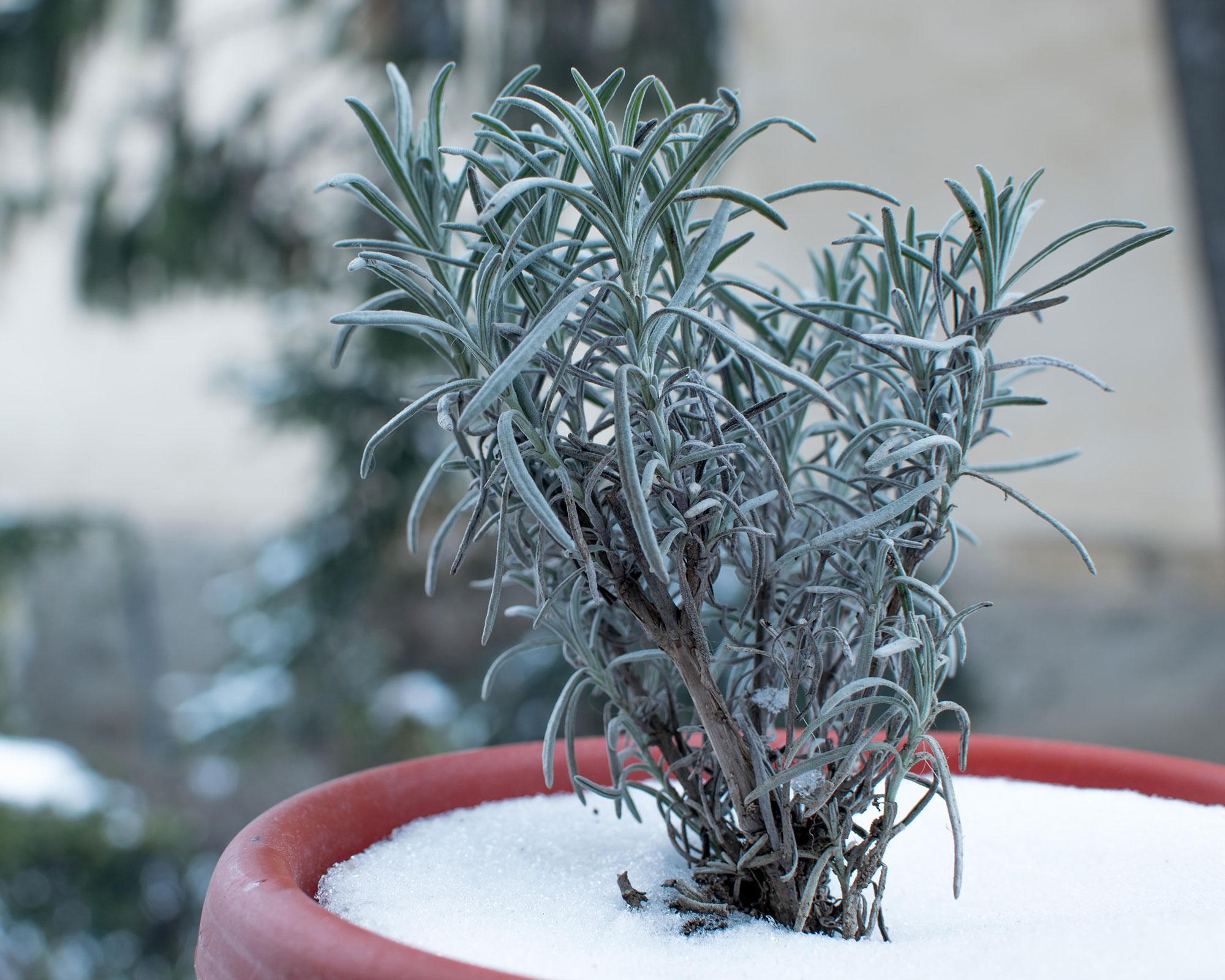
In warmer areas lavender plants tend to stay evergreen and can pretty much be left alone for the duration of winter. But if you live in a colder climate, you may need to intervene to protect your plants from frost and snow.
If you live in a cold region, hopefully you will have thought about where in the yard you planted your lavender and have chosen the most sheltered spot for it.
For extra protection, you can also slot an empty up-ended cardboard box over your plant. First slice open the bottom, then weigh down the flaps with large stones to anchor it. Fill the area around the lavender inside the box with mulch to help cover the roots and protect your plant from snow with a natural insulation blanket.
Be sure to leave the top flaps of the box open otherwise it could create a moisture trap which isn't a good idea as lavender really doesn’t like to be wet.
Alternatively, invest in some frost protection fabric for plants (available from Amazon), which you can place over the top of the plant.
Do you need to winterize all types of lavender?
Despite appearances, English and intermedia lavenders are in fact very cold hardy. 'With good drainage and pruning, cold winter temperatures shouldn't do them any harm,' says Morris Hankinson. 'The key to getting the best from all lavenders is to trim them immediately after they have flowered. The plants will often make a small amount of new growth before winter that will then harden and form the basis of new growth and lots of flowers the following year.'
French lavenders can be quite tender and succumb to hard frosts. 'Either plant them somewhere sheltered, maybe next to a garden wall, or in large garden planters that can be moved to shelter when winter comes,' says Morris. 'Remember to put some drainage stones in the bottom of the pot before you fill with gritty compost.'
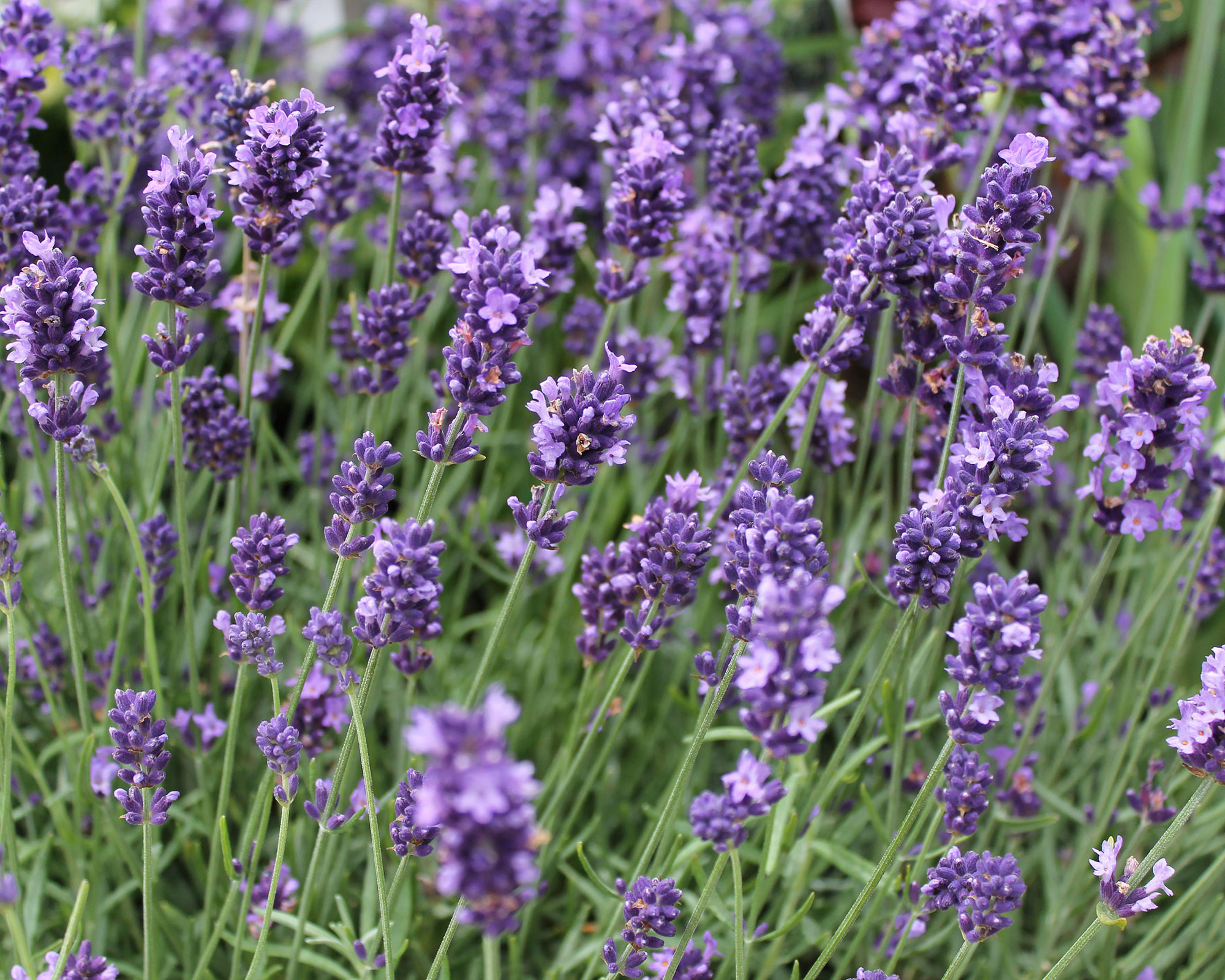
English lavender plants are hardy

Lifestyle journalist Sarah Wilson has been writing about gardens since 2015. She's written for Gardeningetc.com, Livingetc, Homes & Gardens, Easy Gardens and Modern Gardens magazines. Having studied introductory garden and landscape design, she is currently putting the skills learned to good use in her own space where the dream is establishing a cutting garden.
